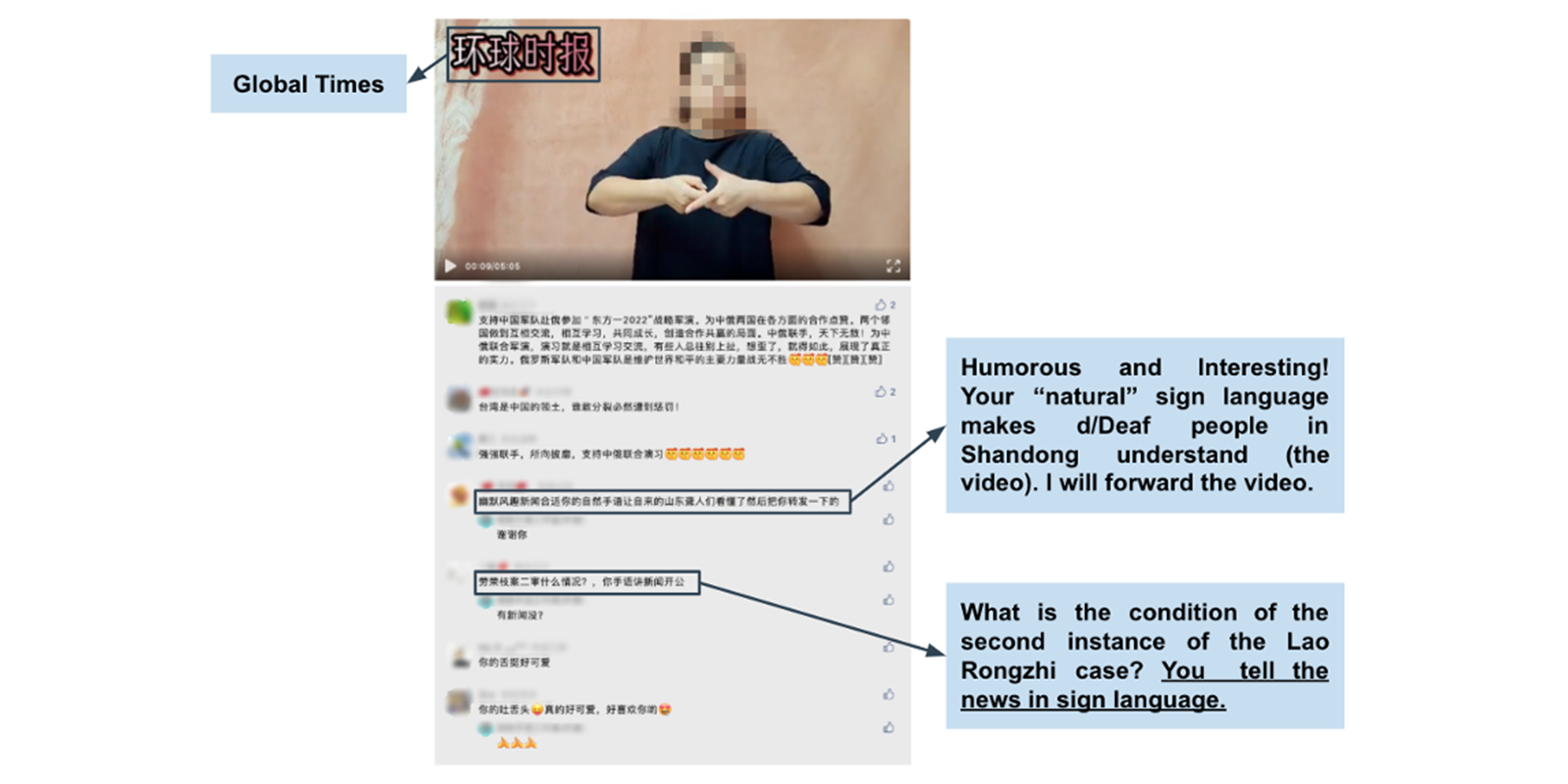Study Motivation
The lack of sign language information has made information access one of the most significant challenges facing d/Deaf people who take sign language as their native langauge. HCI researchers have worked hard to develop sign language generation and interpretation systems through computer vision and natural language processing techniques. However, no existing system is reliable enough for real-world adoption due to lack of training datasets, limitations in computational models, etc. Given the challenges in machine-driven solutions, we seek to understand whether and how d/Deaf communities can support the creation of online sign language content in practice . We turn to d/Deaf communities because d/Deaf communities have traditionally played significant roles in supporting d/Deaf people to access information.

Figure 1. A typical example of d/Deaf videos, i.e., sign language videos created by d/Deaf people for d/Deaf people.

